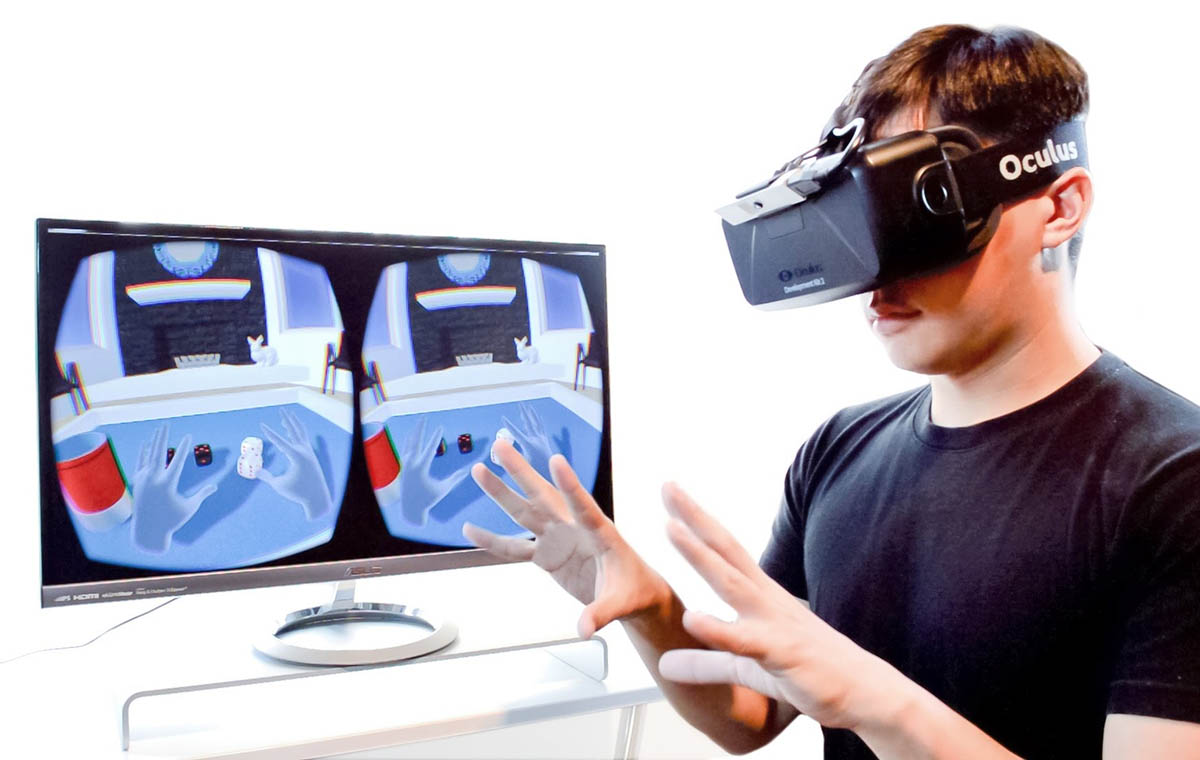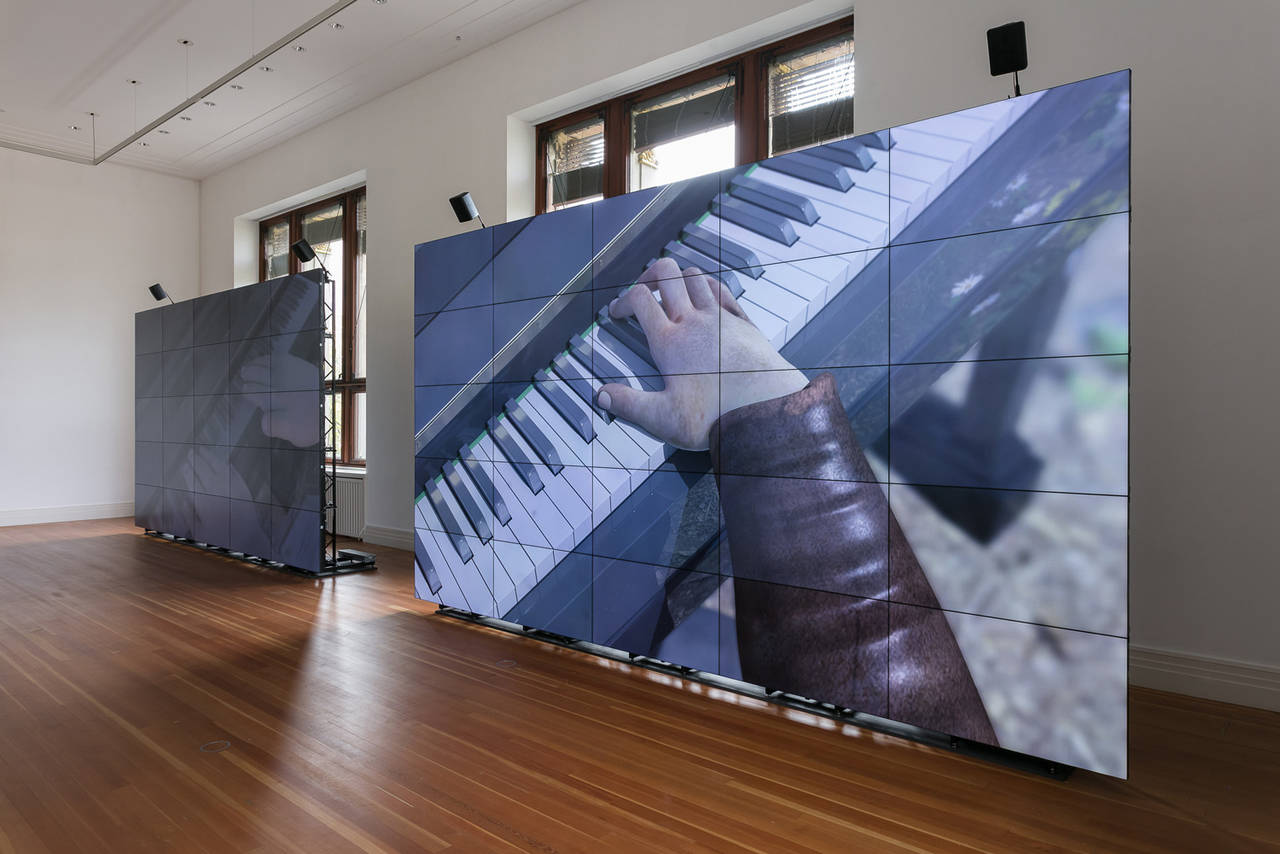Is complete immersion in a virtual world a utopia or a dystopia? These and other questions are answered by Prof. Rupert-Kruse, immersion researcher, in an interview with the SCHIRN MAG.
SCHIRN MAG: Prof. Rupert-Kruse, if you google the term “immersion”, after the very literal interpretation of the term, you quite quickly come across the concept of “learning a foreign language”. In media sciences, there has likewise long been disagreement over what the concept actually encompasses. Why is it so hard to define it precisely?
Prof. Rupert-Kruse: The problem is that here two concepts are actually being combined: First, the concept of immersion relating to the “multimodal architecture of a medium”, i.e. how many sensory channels are being addressed by a medium; and second, the concept of experiencing the present, which results from the immersivity of the medium and can be interpreted as a “mental feeling of presence in a space conveyed through media”. However, here again there is scope for interpretation, as the concept of presence ranges from the mere “attention on a medium” through to the aforementioned “mental feeling of presence in a space conveyed through media”.
And what’s your definition of the concept?
A media gadget or a media ensemble is always described as immersive when it acts as a multisensory source of stimulation, flooding the recipients’ senses with conveyed information. Presence experience can be understood as “mediated experience that seems very much like it is not mediated”. In my understanding I like to reduce this to fundamental physical processes, so where I, in my perception, see virtual objects or experiences as real or existent – although these always take the form of generally briefly deceptive or delusory episodes of perception.

Image via virtualrealitytimes.com
In fact it’s precisely because virtual reality has risen to prominence that immersion has been written about ever more frequently beyond the groves of academia. Does this now actually represent a qualitative change, or does it only seem that way to us? It’s true that you can create a kind of immersion even using much simpler means.
The advantage of VR is the immersivity of the medium. You could argue that here the imagination is not called upon to quite such an extent as in, for example, immersive experiences with literature, since here immersion or presence experiences are created on the level of perception. The big difference is that in literature and film, narration plays a central role, as it is through this that simulative, empathetic and imaginative processes are set in motion – in VR this unfortunately only happens to a certain extent at the moment.
Regardless of how that experience is created, people seem to crave it. What explanatory models do media scientists have for the desire for immersion?
Ultimately it seems to be about experiencing new, foreign things and just something that is generally different, regardless of what media contents we turn to. The new immersive media further boost the intensity of what is then experienced, and we can become part of a virtual world – indeed more than ever before. Generally this happens as part of the work on one’s own identity; escapism and curiosity play a role here, but also observational learning.
In the medium of film, one can easily comprehend how immersion functions – if it functions. In this context, there’s often also talk of “somatic empathy”. What does this mean?
Somatic empathy means shared perception on a physical level – feeling the pain of others, experiencing someone else’s pure feeling on one’s own body.

In 2008, you and Lars Grabbe studied the sci-fi thriller “Cloverfield” to examine how the specific representation of scenes of violence allows the viewer to immerse themselves in the action.
There it was the camera work that triggered physical shock among the recipients. The panic of those filming, when they are faced with the destruction of New York, is expressed in their physical and thus visible shock, which is conveyed to the viewers through the movement of the camera.
Where film is concerned, the limitations of immersion seem obvious: the movie theater, the screen, the running time. After which I can go straight back to my normal life. In other areas, for example in the much more subtly constructed conception of experience spaces, that’s not so easy. Would you agree that the transitions from immersive into “non-immersive” dimensions are increasingly blurred?
I would disagree that it’s easy to step back into normal life with the experiences of films or books. If the experience is fitting, then it can even influence your life. The difference with experience spaces – and here I’m thinking particularly of the theme park “The Void” or the development towards mixed reality – I think lies in the fact that the different realities merge ever more, and ultimately it is the technological or the media context that decides whether we find ourselves in a media situation or not. After all, in immersive terms, we are actually also in the physical reality.

So where the concept is more broadly understood, you could also – to quote the exhibition “Diorama” in the SCHIRN – consider imaginary delving into a natural history diorama as a kind of immersion. Conversely however, you would also have to contain the concept, otherwise ultimately even a trip to the supermarket or a conversation with friends would become immersive in some way.
One would have to differentiate between aesthetic experience and non-aesthetic experience. In reality we are immersive, as this addresses all our senses, and we feel present within it – thus we structure an experience and a world, which we perceive through how it is constructed. The experience of a diorama can be compared to the experience of a head-mounted display, such as those we are familiar with because of VR goggles: high visual immersion in an image space or spatial image. This is an aesthetic experience, which can be compared with the experience of Las Vegas and all its attractions, the Pyramids or the Eiffel Tower, as Laura Bieger [Americanist and author of “Ästhetik der Immersion: Raum-Erleben zwischen Welt und Bild” [“Aesthetics of Immersion: Experience of Space between World and Image”], editor’s note] describes in her book.
Is it at least theoretically conceivable that it will be possible to completely elide such limitations or that they will no longer be identifiable – a kind of “inception” with 1001 sub-levels?
This has already been envisaged. In the chapter “Fundamentals of Phantomatics” of the 1964 book “Summa technologiae”, Stanislaw Lem raises a question that some builders of current immersive technologies and virtual realities are likewise no doubt asking themselves: “How do we create realities for the intelligent beings that exist in them, realities that are absolutely indistinguishable from the standard reality […]”?I don’t think that’s realistic, however, and incidentally, neither does Lem. We put ourselves in media situations basically of our own free will and are aware of their artificial nature – we go through a passage; and regardless of how realistic this media content is, the medium will be recognizable.

Stanisław Lem, Image via polskieradio.pl
In “Solaris” Stanislaw Lem, who is known to many primarily as a sci-fi author, also notes the familiar idea that people do not need other worlds, just mirrors.
VR can also function as a mirror. It differs from our reality and ultimately gives us information about ourselves and our relationships with reality.
Assuming this complete dissolution were feasible: Would it, for you, represent a utopia or a dystopia – or a notion beyond today’s moral categories?
On the one hand a utopia – albeit a useful one, since this idea is a driving force in the current development of immersive media technologies. On the other hand, it would be a dystopia – precisely because of the moral question, and incidentally Lem had something to say here too: How could we manipulate the architects of such virtual worlds if we do not recognize or question the simulation as such?
THE INTERVIEWEE
Professor Patrick Rupert-Kruse is a media theorist and immersion researcher at Kiel University of Applied Sciences. He focuses on the theory and conceptualization of immersive media, media reception research and transmedia storytelling, and is head of the Institute for Immersive Media (ifim).


How Virtual Reality conquers the art world
Ever danced with a wolf? Artist duo Djurberg & Berg make it possible with their first virtual reality work. They are part of a young generation of...

The enemy of my enemy
From August 23 onwards, a unique project by artist Neïl Beloufa will transform the SCHIRN into a stage. Palais de Tokyo is currently hosting Beloufa's...

In the vicious circle of sadness
As part of the “Immersion” series, British artist Ed Atkins is presenting an exhibition at Martin-Gropius-Bau that addresses our ubiquitous escapism...

The border between reality and fiction
Its productions turn the theatergoer into an actor: An interview with performance collective SIGNA about immersion, fiction and its play “Das halbe...

From window to pool
The distance between viewers and film is becoming ever smaller. Even 120 years ago, cinemagoers were jumping out of their seats as a locomotive...

A walk-in diorama
These days, computer games are discussed in arts supplements. What is their appeal and how do they develop such a strong draw for people? Let’s play!

Hats off, it’s Wagner
The opera “Mondparsifal Beta 9-23” by Jonathan Meese at Berliner Festspiele draws visitors into a cosmos where logic plays only a subordinate role.

Noise interference from a distant world
An experience for all the senses: An exhibition at Kunstverein Frankfurt invites viewers to immerse themselves in virtual and constructed worlds

Who lives here?
Visitors can immerse themselves in a long bygone era at the Dennis Severs House in London. A truly great experience.

A journey back in time to a divided Berlin
It might not look very exciting from the outside: A large black rotunda that has landed on the onetime “Death Strip” of the Berlin Wall like a...

Diorama. Inventing Illusion
Reality or illusion: The SCHIRN presents a major exhibition dedicated to the idea of staged vision.

Zombies like us
The Internet is full of the undead. The artist duo New Scenario makes them visible — in works that function online, and even offline sometimes.

The dream of watching in 360°
Humans have always had a burning desire to watch, to observe. Now, virtual reality is opening up entirely new possibilities for the creation of...

Exhibited realities
In the exhibition “Diorama. Inventing Illusion” artists question staged visions and reconstructed realities. In modern everyday culture, this...